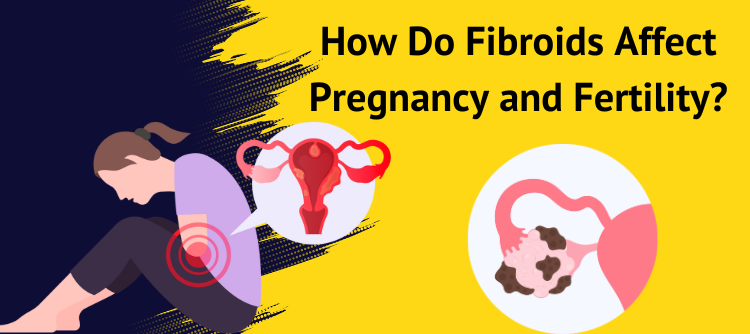How Do Fibroids Affect Pregnancy and Fertility?

Fibroids, though benign, can significantly impact female fertility and pregnancy outcomes. Understanding the nature of fibroids and their various types is crucial for individuals seeking to conceive. In this article, we explore the fundamentals of fibroids and delve into the different types that can affect reproductive health.
What is Fibroids?
Fibroids, medically known as uterine leiomyomas, are non-cancerous growths that develop in the uterus. These growths can vary in size and location within the uterine wall, and their presence can interfere with fertility and pregnancy. Fibroids may cause symptoms such as heavy menstrual bleeding, pelvic pain, and pressure, depending on their size and location.
In the context of fertility, fibroids can pose challenges by distorting the uterine cavity, affecting the implantation of a fertilized egg, or obstructing the fallopian tubes. Seeking timely female infertility treatment in Jaipur is essential for individuals with fibroids who are striving to conceive, as early intervention can improve fertility outcomes.
Types of Fibroids:
There are several types of fibroids classified based on their location within the uterus:
- Submucosal fibroids: These fibroids develop beneath the inner lining of the uterus and can protrude into the uterine cavity, potentially impacting fertility and increasing the risk of pregnancy complications.
- Intramural fibroids: These fibroids grow within the muscular wall of the uterus and may cause symptoms such as pelvic pain and heavy menstrual bleeding. While they may not directly obstruct fertility, larger intramural fibroids can affect the shape and size of the uterus, potentially impacting fertility.
- Subserosal fibroids: These fibroids develop on the outer surface of the uterus and may grow to a significant size, causing pressure on surrounding organs. While subserosal fibroids typically do not affect fertility, they can lead to discomfort and complications during pregnancy.
Causes of Fibroids:
The exact cause of fibroids remains unclear, but several factors may contribute to their development, including:
Hormonal fluctuations: Estrogen and progesterone levels play a role in fibroid growth, with fibroids typically growing during reproductive years when hormone levels are higher.
Genetic predisposition: A family history of fibroids increases the likelihood of developing them, suggesting a genetic component to their occurrence.
Ethnicity: Studies have shown that individuals of African descent are more likely to develop fibroids compared to individuals of other ethnic backgrounds.
Obesity: Excess body weight, particularly visceral fat, may be associated with an increased risk of fibroid development.
Hormonal imbalances: Conditions such as polycystic ovary syndrome (PCOS) or thyroid disorders may contribute to hormonal disruptions that can promote fibroid growth.
Symptoms of Fibroids:
Fibroids may present with various symptoms, depending on their size, location, and number. Common symptoms of fibroids include:
- Heavy menstrual bleeding: Fibroids can cause prolonged or heavy periods, leading to anemia and fatigue.
- Pelvic pain or pressure: Large fibroids may exert pressure on surrounding organs, causing discomfort or pain in the pelvic region.
- Pain during intercourse: Fibroids can lead to discomfort or pain during sexual intercourse.
- Frequent urination: Fibroids pressing on the bladder may result in increased frequency of urination.
- Constipation or difficulty emptying the bladder: Fibroids pressing on the rectum or bladder may interfere with bowel movements or urination.
Recognizing these symptoms is crucial for early detection and prompt treatment of fibroids, particularly for individuals planning to conceive.
Fibroids and Fertility: The Impact on Conception:
Fibroids can affect fertility through various mechanisms, including:
- Distortion of the uterine cavity: Submucosal fibroids, which grow within the uterine cavity, can alter its shape and size, making it difficult for a fertilized egg to implant and establish pregnancy.
- Interference with sperm and egg interaction: Fibroids located near the cervix or within the uterine wall may obstruct the passage of sperm, reducing the chances of fertilization. Additionally, fibroids can impede the movement of eggs released from the ovaries, hindering their journey through the fallopian tubes.
- Hormonal disruptions: Fibroids may disrupt hormonal balance within the reproductive system, affecting ovulation and menstrual cycles, thereby reducing fertility.
Individuals with fibroids who are experiencing challenges with conception should seek evaluation and guidance from fertility specialists. Treatment options, such as fibroid removal surgery or assisted reproductive technologies, may be recommended to improve fertility outcomes.
Conclusion:
Navigating fertility challenges associated with fibroids requires a comprehensive approach that addresses both medical and emotional aspects. Consulting with experts at the best IVF center in Jaipur can provide individuals with personalized treatment plans and support throughout their fertility journey.
In conclusion, fibroids can impact pregnancy and fertility in complex ways, but with timely intervention and expert guidance, individuals can overcome these challenges and realize their dream of parenthood. Remember, you are not alone on this journey – seek support, stay informed, and empower yourself with the resources needed to navigate fibroids and fertility with confidence and hope.
